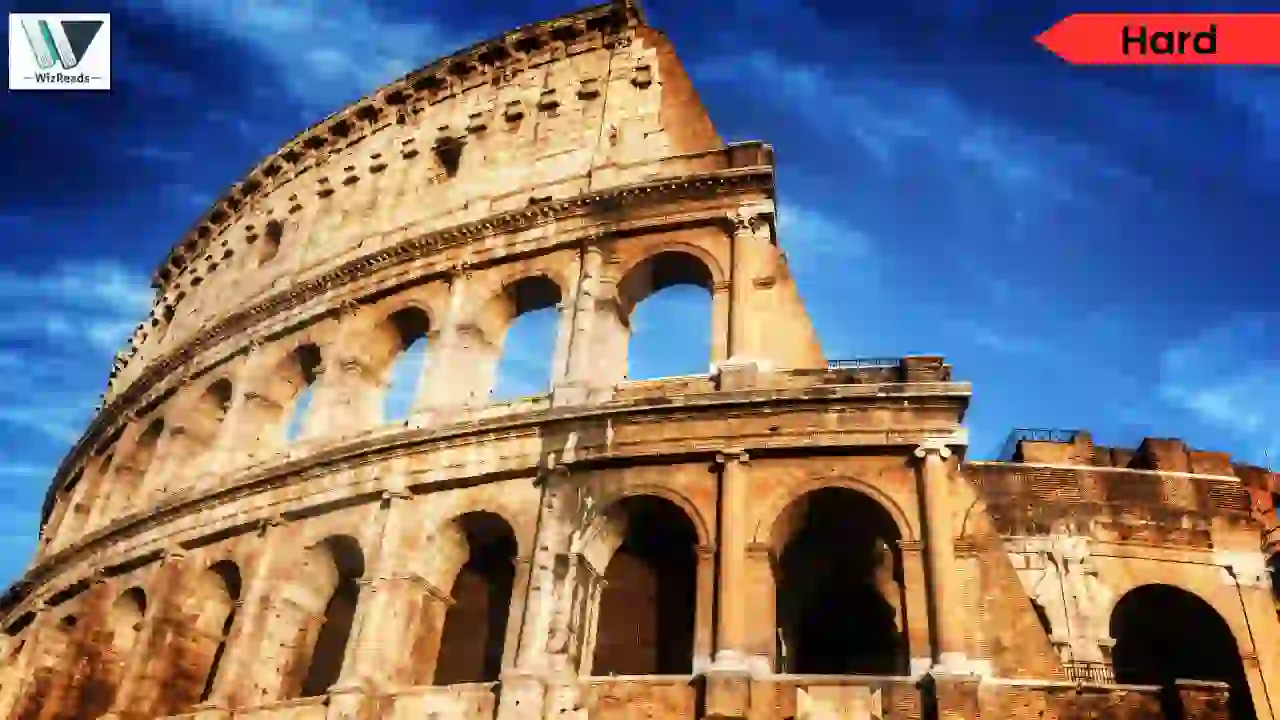
Newsletter Subscribe
Enter your email address below and subscribe to our newsletter

Enter your email address below and subscribe to our newsletter

What happens when the mighty Roman Empire stops building its most iconic entertainment venues? Could the end of amphitheater construction signal something far more profound than changing architectural tastes? These passages explore the complex factors behind Rome’s transition from spectacle to survival, challenging readers to untangle the intricate web of economic pressures, demographic shifts, and political transformations that reshaped an entire civilization.
Read these hard to read RC passage(s) in Social Sciences and answer the question(s) that follows. You can choose the GMAT style Reading Passage and the question or the GRE RC variant and answer the GRE-style question. Even better, you could solve both.
Archaeological theory posits that the construction of Roman amphitheaters reflects deliberate imperial expansion strategies designed to consolidate territorial control through cultural assimilation. According to this framework, emperors commissioned these monumental structures during periods of active conquest to establish Roman identity in newly acquired regions, thereby transforming local populations into loyal imperial subjects through shared entertainment experiences.
Recent excavations in Kaiseraugst, a former Roman settlement in modern-day Switzerland, challenge this conventional interpretation. The newly discovered fourth-century amphitheater represents one of the final examples constructed before the empire’s collapse, built during a period when Roman territorial expansion had ceased entirely. Lead archaeologist Jakob Baerlocher argues that the structure’s construction techniques mirror those employed during the empire’s terminal phase, suggesting a fundamentally different motivation for amphitheater development. The facility’s modest dimensions—164 feet by 131 feet—contrast sharply with earlier imperial projects like the Colosseum, which accommodated over 50,000 spectators for elaborate state-sponsored spectacles.
Evidence indicates that local administrative officials commissioned the Kaiseraugst amphitheater to serve regional entertainment needs rather than imperial propaganda purposes. The discovery of plastered interior walls, wooden seating arrangements, and a designated tribune section suggests community-focused programming rather than grand imperial demonstrations. This provincial approach reflects a significant departure from traditional imperial amphitheater construction, indicating that these structures evolved beyond their original political functions to serve purely local social requirements during the empire’s declining years.
The final paragraph’s conclusion that the Kaiseraugst amphitheater’s features indicate community-focused programming depends on which of the following assumptions?
The passage concludes that specific architectural features (plastered walls, wooden seating, tribune section) indicate “community-focused programming rather than grand imperial demonstrations.” This reasoning assumes that different types of entertainment programs require different architectural features—without this assumption, the same features could accommodate either community or imperial programming, making the conclusion unsupported.
Correct Answer: Choice (D)

The precipitous decline of amphitheater construction across the Roman Empire during the fourth century CE resulted from a confluence of economic, political, and demographic pressures that fundamentally altered imperial priorities. Initial fiscal constraints emerged as military expenditures consumed increasingly disproportionate portions of imperial revenues, necessitating the abandonment of costly public works projects. These budgetary limitations coincided with territorial contraction, as barbarian incursions forced Romans to concentrate resources on defensive fortifications rather than entertainment venues. Simultaneously, demographic shifts profoundly transformed urban populations throughout the empire, as mass migrations from rural areas, coupled with foreign settlement patterns, diluted traditional Roman cultural preferences for gladiatorial spectacles.
These cascading pressures diminished local demand for amphitheaters while concurrent administrative decentralization transferred construction decisions from imperial authorities to provincial officials who prioritized immediate survival needs over cultural amenities. The cumulative effect manifested in the virtual cessation of new amphitheater projects by 400 CE, with existing structures falling into disrepair as maintenance funds evaporated. This archaeological record chronicles the empire’s inexorable transformation from a culture of public spectacle to one focused primarily on military survival and territorial preservation.
Based on the passage, which of the following can most reasonably be inferred about Roman amphitheater construction prior to the fourth century CE?
The passage states that fourth-century “military expenditures consumed increasingly disproportionate portions of imperial revenues,” implying that in earlier periods, military spending represented a smaller, more manageable fraction of the budget. This allowed resources to be allocated to amphitheater construction, which the passage indicates was abandoned due to these fiscal constraints.
Correct Answer: Option (B).